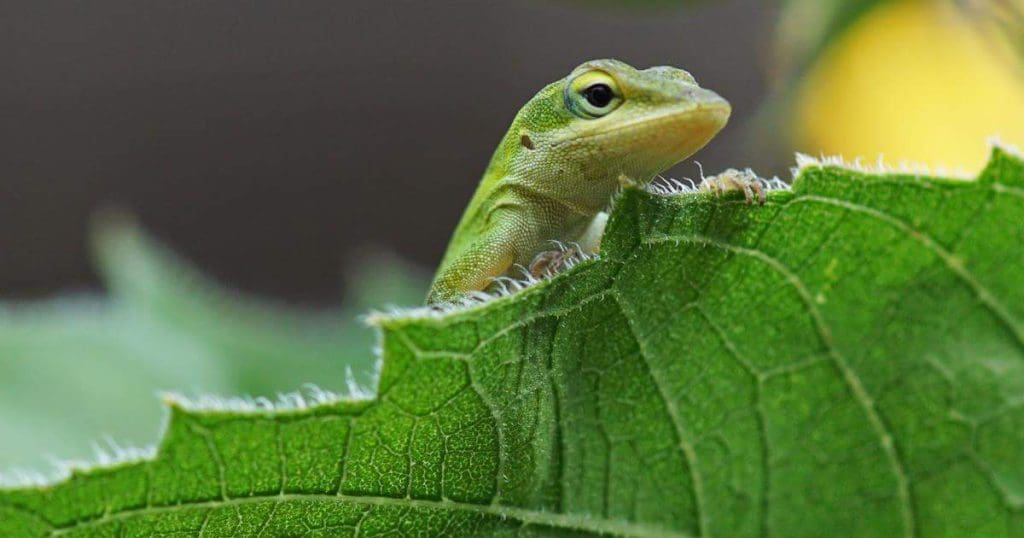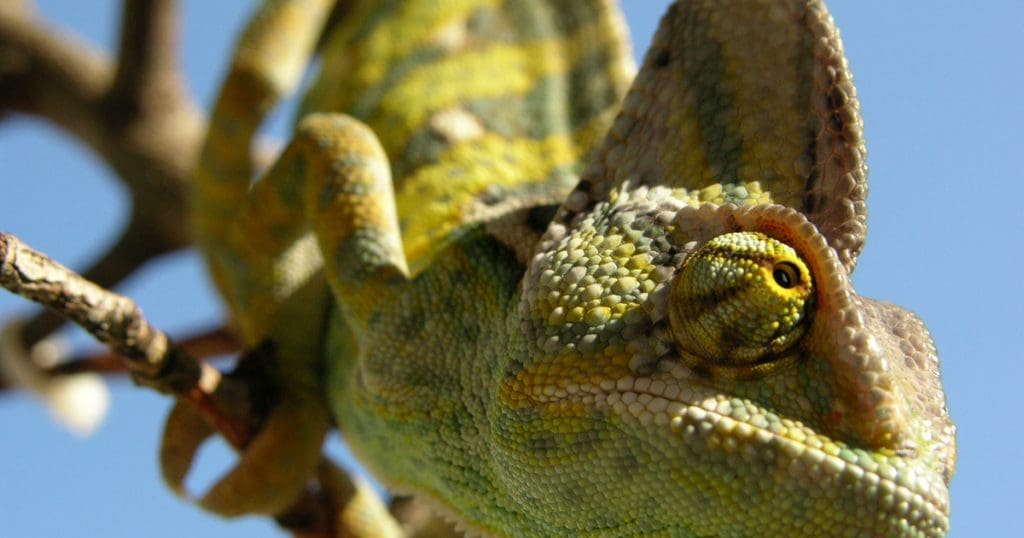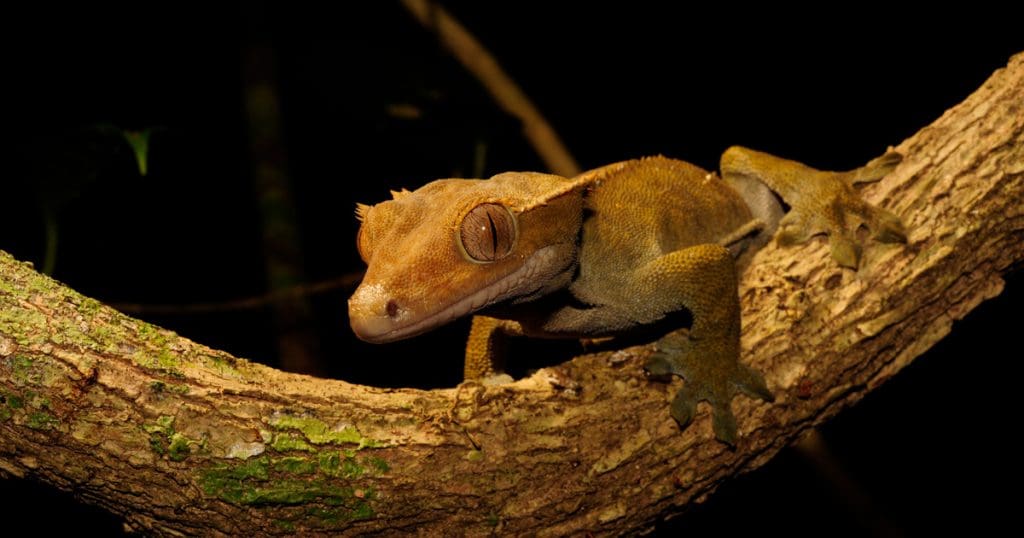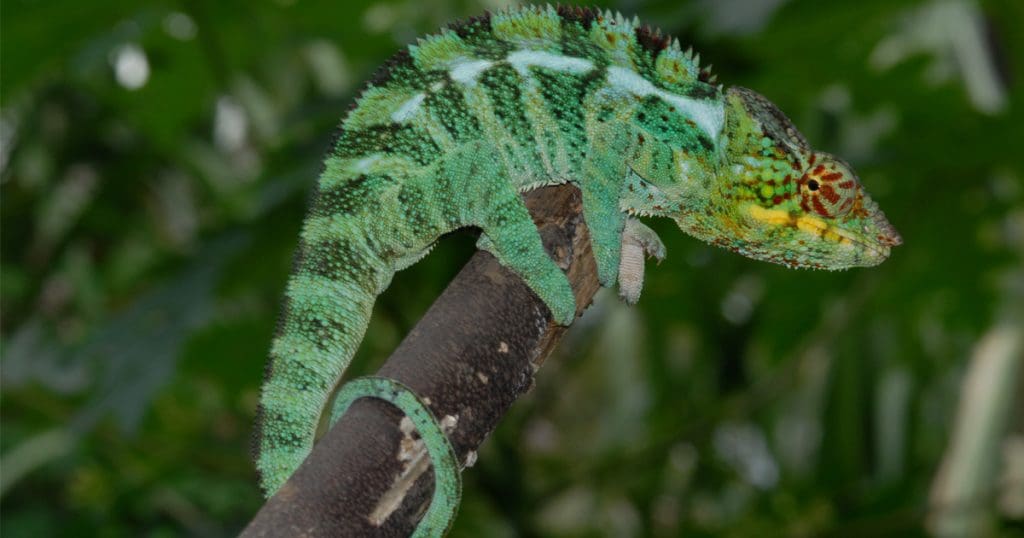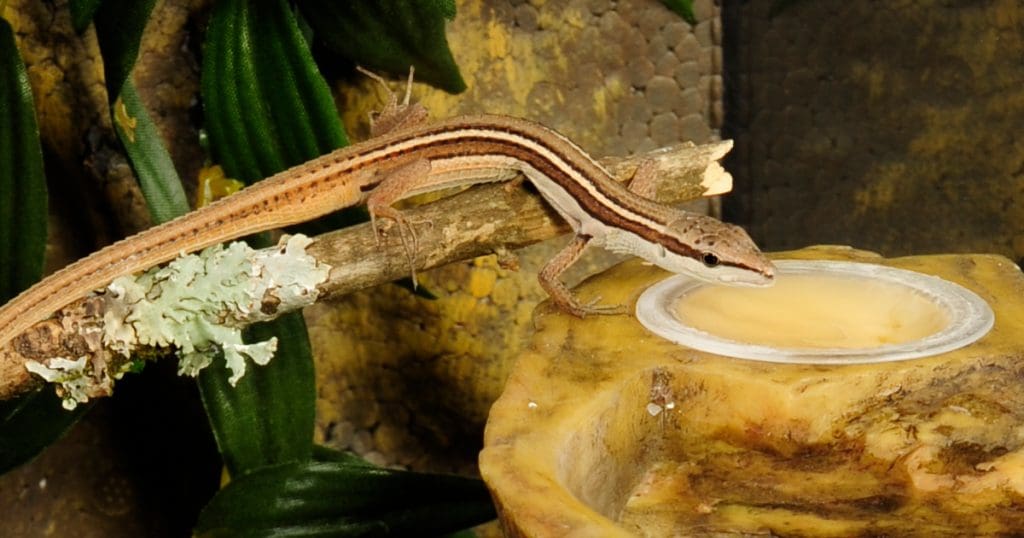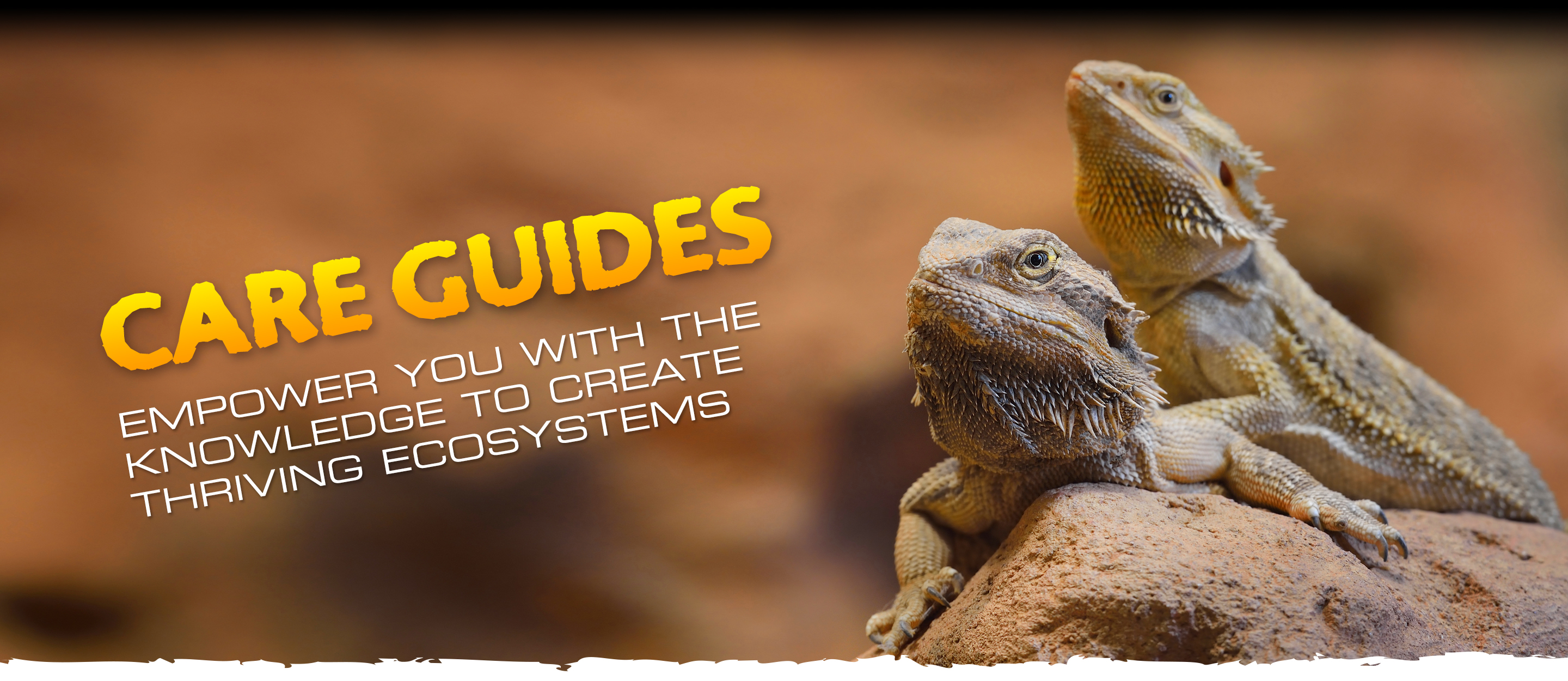
Lizards
Whether you’re a seasoned reptile enthusiast or just beginning your journey into the captivating world of lizards, our comprehensive care guides are designed to make you a pro. Uncover invaluable insights, expert tips, and practical advice on how to provide the best care for your scaly companions. From creating the perfect lizard terrarium to understanding their unique dietary requirements, our care guides are your one-stop resource for ensuring the well-being of your reptilian friends. Explore our care guides, scale the heights of our recommendations, and embark on a thrilling adventure into the wonderful realm of lizard care.
“Unlock the secrets to lizard care, and watch your scaly companions thrive.”
Anolis carolinensis
Green Anoles are native to the Southeastern United States, but have also been introduced to Hawaii, Ogasawara Islands of Japan, Cuba, the Bahamas, and Guam. Green Anoles are diurnal, primarily arboreal, iguanid lizards of the Genus Dactyloidae. Green Anoles mostly inhabit trees and shrubs in tropical & subtropical evergreen forests, but can just as well be found in open grassland with only a few trees, and even in rural and urban areas.
With their changing base color from brown to vivid green, their reddish-pink colored dewlap and their interesting displaying behaviour, these terrarium inhabitants rank among the most popular and easiest to keep beginner reptiles.
Green Anoles are a fairly social species and are best enjoyed when kept in small groups of 1 male with 3 or more females. The interaction between the animals in these small groups increases the viewing pleasure but also stimulates their mating behavior.
Green Anoles have been captive bred in the USA and Europe for more than 30 years. Green Anoles are available as captive bred specimen as well as wild-caught specimen using sustainable ranching and size-selective harvesting.
Chamaeleo calyptratus
Veiled Chameleons or Yemen Chameleons are native to Yemen and Saudi Arabia. There are also introduced populations in Hawaii (thought to be eradicated but still persisting), California and SE and SW Florida, USA. They primarily prefer montane subtropical to tropical vegetation in the deep valleys (called wadis), in the Hijaz Mountains in Saudi Arabia and Yemen.
Since Yemen is suffering for over a decade of war and is not an easy country to travel to, or to export animals from, it is amazing how this species was established so well in the hobby. One of the first to study this species in nature, as well as establish the captive husbandry guidelines, was the world-renowned herpetologist Petr Necas. He bred tens of thousands of Veiled Chameleons and introduced these to the hobbyists in Europe and the USA. In the meantime, this species has become not only the most readily available chameleon, but also one of the more popular reptile species in general. Due to selective breeding, there are "bloodline" variations of the Veiled Chameleon available that show more yellow/orange or bluer and there's even a partially leucistic color morph available (called translucent in the USA).
Correlophus ciliatus
Crested Geckos (Correlophus ciliatus) are native to the islands of New Caledonia in the southern Pacific Ocean. These Crested Geckos, or Eyelash geckos, get their common names from the distinctive rows of spikes that run over their eyes and down the sides of their heads.
Thought to be extinct for many years, they were rediscovered in 1994, and several animals were brought to Europe and the United States. Soon thereafter, they proved to be very prolific in terrarium. Due to their beauty, easy manageable size, calm temperament, and ease of care in terrarium, these geckos have become one of the most popular reptiles kept as pets.
“One of the great accomplishments of herpetoculturists,” says Philippe de Vosjoli, “was to establish the New Caledonian Crested Gecko in captivity. Twenty years ago, this species was known by hobbyists only in the form of photographs of preserved museum specimens.”
Eublepharis macularius
Leopard Geckos are native to Iran, Pakistan, Afghanistan and the North-Western part of India. The Leopard Gecko’s scientific name refers to the fact that these geckos have eyelids, whereas their common name is based on their spotted “leopard-like” color pattern. Young Leopard Geckos show a more banded pattern which over time changes towards a spotted pattern when they become adults.
It is a docile and “easy-to-care” for species that has been captive bred in the USA and Europe for more than 40 years. Their cute smiley faces, their ability to clean their eyes with their tongue and their somewhat clumsy, tail-wiggling movements make them appealing display animals for both the beginning reptile enthusiast as well as for the advanced hobbyist.
Leopard Geckos are a fairly social species and are best enjoyed when kept in small groups of 1 male with up to 5 females. The interaction between the animals in small groups increases the viewing pleasure but also stimulates their natural- and mating behavior.
Leopard Gecko youngsters are readily available and come in a variety of colors & patterns. The list of designer morphs available is extensive and still growing. Where it started with High Yellow, Albino, Striped, Hypo and Hyper, there's now many cool morphs available with appealing names like Godzilla Super Giant, Banana Blizzard, Blazing Blizzard, Enigma, Tangerine, Raptor, Diablo Blanco and many more.
Furcifer pardalis
Panther Chameleons are native to Madagascar, but have also been introduced to Réunion Island somewhere between 1750 and 1836. They were first brought to Réunion by sailors who left them at the landing port of the island during that era, which was in the vicinity of Saint Paul. The Panther Chameleons thrived and over time, they spread to various parts of the Island. There have also been sightings of Furcifer pardalis on Mauritius Island, but these populations are expected to have been introduced quite recently.
They primarily prefer warm and humid lowland coastal forests, rainforest canopies, secondary forests, plantations and hotel or home gardens and planted fences.
Ever since the Panther Chameleon was imported in Europe and the USA, starting around 1980, herpetologists and reptile breeders have worked on enhancing the captive husbandry guidelines continuously. For instance, the use of UVB lighting was a game changer and after a decade or two, the Panther Chameleon became well-established in the hobby.
Due to the hardiness, the gentle character and the striking colors, the Panther Chameleon, rapidly became a popular terrarium animal. The Panther Chameleon is currently available, as captive bred animals, in many geographic color morphs.
There's currently a wide array of captive bred, geographic color forms of the Panther Chameleon available from breeders as well as in stores and on reptile shows. There are also color morphs available that have been selectively bred to increase a certain color or color combination by mixing various natural, geographic color forms. Panther Chameleons have now been captive bred in Europe and the USA for more than 30 years.
Pogona vitticeps
Bearded Dragons are native to Australia. Both the scientific and the common name of the Bearded Dragon refer to the spiny “beard” (or pogon in Ancient Greek) which can be puffed up and darkened in coloration whenever the Bearded Dragon gets excited, stressed or wants to impress and opponent. No need to panic; the spines on the thorny triangular-shaped head and spiny torso of these Dragons may look frightening but are actually very soft when touched.
Their relatively small size and docile nature but especially their love for attention, make these gentle dragons an attractive species for both the beginning reptile enthusiast, advanced hobbyist and even for kids. And moreover, unlike night active creatures, your Bearded Dragon is awake when you are awake.
Bearded Dragons have been captive bred in the USA and Europe for over 30 years. Since Australia already banned the export of native fauna and flora in the 1960’s, all currently available Bearded Dragons are captive bred over generations.
Bearded Dragon youngsters are now readily available in their natural color and pattern, but also in a multitude of color morphs. The list of designer morphs available is extensive and still growing. Where it started with twisting and tweaking the color and pattern, the latest morphs even have a different scalation. There's a lot of cool morphs available with appealing names like Sandfire Red, Sandfire Yellow, Sandfire Pastel, Tangerine, Hypo Melanistic, Witblits, Paradox, Citrus Tiger, Lemon Fire and many more. But, as stated before, not only the colors can be isolated and enhanced by selective breeding, also some specific morphological characteristics, like size or scales can be engineered: German Giants (larger than the average Bearded Dragon), Leatherback (smooth back, no spikes), Silkback (smooth skin), etc.
Takydromus sexlineatus
Six-striped Long-tailed lizards, sometimes also referred to as Grass Lizards, are native to the Southeastern Asia region, including countries like India, China, Myanmar, Laos, Thailand, Vietnam, Cambodia, Malaysia and Indonesia. Six-striped Long-tailed Lizards are diurnal, primarily arboreal, lizards of the Genus Takydromus. With their long tail and slender body, the Long-tailed lizards are perfectly adapted to inhabit the tropical & subtropical open forests & grasslands with shrubs, bushes and tall grasses.
With their slender-built and long tails, these gentle, easy-going lizards rank among the most popular and easiest to keep beginner reptiles. It is simply fun to watch the balancing acts these agile and energetic lizards perform while cruising through the terrarium plants and decoration.
Six-striped Long-tailed Lizards are a fairly social species and are best enjoyed when kept in small groups of 1 male with 3 or more females. Although Long-tailed lizard males are not extremely territorial, housing 2 or more males in an enclosure might result in fights and injuries. The interaction between the animals in these small groups increases the viewing pleasure but also stimulates their mating behavior.
Six-striped Long-tailed Lizards have been captive bred in the USA and Europe for more than 20 years. Long-tailed Lizards are available as wild-caught specimen, but are also occasionally available as captive bred youngsters in stores or on reptile shows.

